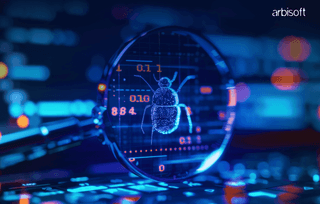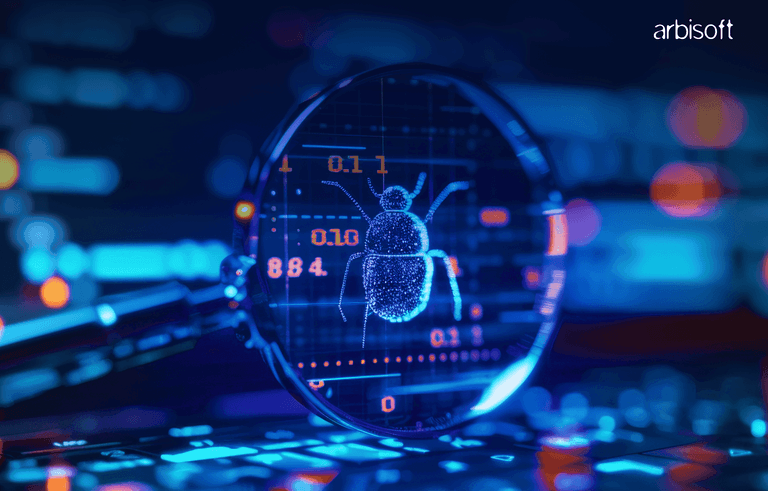We put excellence, value and quality above all - and it shows




A Technology Partnership That Goes Beyond Code

“Arbisoft has been my most trusted technology partner for now over 15 years. Arbisoft has very unique methods of recruiting and training, and the results demonstrate that. They have great teams, great positive attitudes and great communication.”
Navigating Transfer Learning in Generative AI

Once deemed a futuristic fantasy, Generative AI has now become the maestro orchestrating worlds where words dance and images leap off the screen. Yet, the true sorcery behind this artistic renaissance is none other than transfer learning.
In this blog, we unravel the mystique surrounding this technique, decipher the motivations, explore technical depths, and consider challenges associated with this transformative technique that propels generative models into a realm of limitless creativity. It's the secret language that empowers these models to transcend constraints and fill the canvas of innovation with boundless imagination.
The Transfer Learning Fundamentals
At its core, transfer learning involves harnessing knowledge gained from one task and applying it to another, often leveraging deep learning solutions to enhance model performance and innovation. Imagine a chess grandmaster switching to checkers – they wouldn't discard their strategic prowess but instead, leverage it to conquer a related game. In the domain of generative AI, transfer learning enables models to inherit knowledge from pre-trained tasks, providing a scaffold for innovation and creativity.
It often works in tandem with prompt engineering, the art of crafting effective inputs to guide large language models toward optimal outputs, especially in fine-tuned and domain-specific use cases.
Motivation Behind Transfer Learning
Why bother with the complexities of transfer learning in generative AI? Transfer learning is the architectural blueprint that allows AI models to stand on the shoulders of their predecessors.
1. Efficiency and Resource Optimization
Training a generative AI model from scratch is a computational burden. Transfer learning mitigates this by allowing models to build upon the wealth of knowledge encapsulated in pre-trained models, reducing the need for colossal datasets and extensive computational resources.
2. Cross-Domain Adaptability
Generative AI often encounters diverse creative landscapes. Transfer learning facilitates seamless adaptation across domains by enabling models to retain general knowledge while fine-tuning the specifics of a new task. It's the art of applying existing wisdom to novel challenges.
Delving into the Technical Complexity
For the enthusiasts venturing into the technical intricacies, transfer learning unfolds as a sophisticated symphony, with fine-tuning, feature extraction, and domain adaptation taking center stage in the generative AI orchestra.
1. Fine-Tuning
Imagine a pre-trained model as a virtuoso musician, proficient in a variety of tasks. Fine-tuning is akin to the musician polishing a specific skill before a specific performance. It involves adjusting the parameters on particular layers of the model and tailoring its capabilities to excel in a targeted task.
This nuanced process allows the model to learn the details and intricacies relevant to the new domain, showcasing a delicate dance between preserving general knowledge and acquiring specialized expertise.
2. Feature Extraction
In the world of generative AI, feature extraction is the art of distillation. Think of it as identifying the essential notes in a melody. Pre-trained models come laden with information from their original tasks. Feature extraction involves isolating and repurposing these valuable features for a new creative endeavor. It's a strategic move, ensuring that the model capitalizes on the most relevant aspects of its prior knowledge when generating novel content.
3. Domain Adaptation
As our generative AI maestro traverses creative landscapes, domain adaptation becomes the compass guiding its journey. For instance, Google researchers harnessed domain adaptation techniques to refine the accuracy of speech recognition models amidst diverse environments, from bustling noise to nuanced accents and fluctuating acoustic conditions. This transformative approach not only cultivates a model's linguistic finesse but also nurtures its visual prowess, enabling seamless navigation through the intricate tapestry of diverse datasets. Thus, our AI creations emerge as multifaceted virtuosos, poised to orchestrate brilliance across a myriad of real-world scenarios.
These technical nuances are the notes and cadences that compose the symphony of transfer learning in generative AI. Fine-tuning refines the performance, feature extraction distills the essence, and domain adaptation harmonizes the model with diverse creative realms. Together, they form a virtuoso ensemble, allowing AI to transcend its original training and create masterpieces that resonate across a spectrum of tasks and domains.
Challenges and Trade-offs
Where benefits abound, it is equally imperative to navigate the challenges and recognize the inherent trade-offs. Let's delve into the nuanced complexities that can arise:
1. Domain Mismatch
Imagine transfer learning as a seafaring vessel navigating from one creative domain to another. When the source domain (where the model is pre-trained) differs significantly from the target domain (where it is applied), challenges emerge.
For instance, consider you have a model trained to recognize animals in pictures. Now, if you want to use this same model to recognize underwater creatures, it might not work well because it's like using a boat designed for calm seas in rough waters – it's not prepared for the new environment.
This discrepancy, known as domain mismatch, can result in suboptimal performance. It's akin to expecting a ship designed for smooth waters to seamlessly navigate turbulent seas; the mismatch between the learned features and the new environment can hinder the model's adaptability.
2. Biases in Source Data
Another challenge arises from biases inherent in the source data. Picture the source domain as a unique ecosystem with its biases and idiosyncrasies. When these biases persist in the transfer learning process, they can influence the model's output in the target domain. It's similar to inheriting certain preferences or tendencies from the source and unintentionally carrying them over, potentially skewing the generative AI model's perception and creative output.
Let's say you have a model trained on a dataset of people's faces, but this dataset has a bias – it mostly includes images of young people. Now, if you use this model to generate faces of elderly individuals, it might struggle because it's biased towards younger faces.
This bias in the source data influences the model's understanding of what faces look like. It might unintentionally prioritize features commonly found in younger faces, like smoother skin or fewer wrinkles, even when generating images of older people.
3. Navigating the Sea of Transfer Learning
Acknowledging these challenges is comparable to equipping our seafaring vessel with the necessary navigation tools. To mitigate domain mismatch, practitioners often resort to techniques like domain adaptation, aligning the model's understanding with the intricacies of the target domain. Addressing biases requires meticulous scrutiny of the source data and, when possible, corrective measures to ensure fair and unbiased generative outcomes.
Let's say you have a model trained to translate text from English to French. However, when you try to use this model to translate medical documents, you notice that it doesn't perform as well. This is because the vocabulary and structure of medical documents differ from everyday language.
Now, consider if the original dataset used to train the translation model had a bias towards certain types of English text, such as news articles. This bias might result in the model producing translations that favor certain writing styles or perspectives over others, leading to potentially unfair or biased outcomes.
As we embark on this journey, it's a reminder that, while transfer learning empowers AI to leapfrog limitations, a thoughtful approach is required to navigate the diverse and sometimes turbulent waters of varied domains and biases.
Unveiling the Power of Transfer Learning
In the vast landscape of artificial intelligence, transfer learning emerges as a beacon, illuminating the path to unprecedented creativity and proficiency, while organizations increasingly integrate ai and data science services to drive data-driven innovation. As we delve into studies and real-world applications, we witness the tangible impact of this technique, shaping the generation of images and the evolution of language processing models.
a. Image Generation and Style Transfer
Studies, such as those exploring StyleGAN, showcase how transfer learning excels in generating realistic images. Models trained on massive datasets can be fine-tuned for specific styles, demonstrating unprecedented prowess in creating visually stunning content.
b. Natural Language Processing (NLP) Achievements
Transformer models, including BERT and GPT, have revolutionized NLP. Transfer learning plays a pivotal role here, with models pre-trained on vast corpora and subsequently fine-tuned for specific language tasks, achieving state-of-the-art results in tasks like text completion and sentiment analysis.
Visit our previous blog to learn how transformer architecture is used in real-life applications.
In a Nutshell
In the comprehensive realm of generative AI, mastering transfer learning is like possessing a versatile toolkit. It's about efficiency, adaptation, and leveraging the collective knowledge of AI models that have come before. As you navigate the intricate tapestry of transfer learning, remember: it's not just a technique - it's a transformative force that propels your AI creations into realms of unprecedented creativity. So, embrace the complexity, experiment relentlessly, and witness the evolution of AI-generated masterpieces.
























